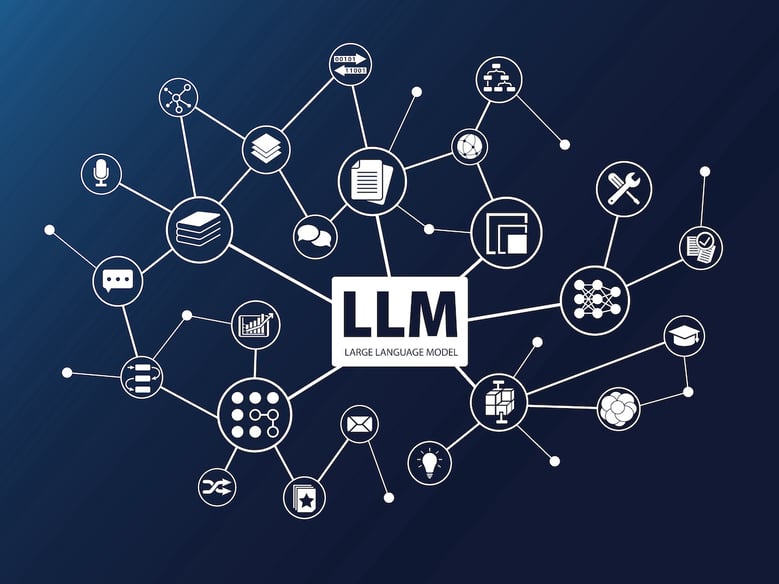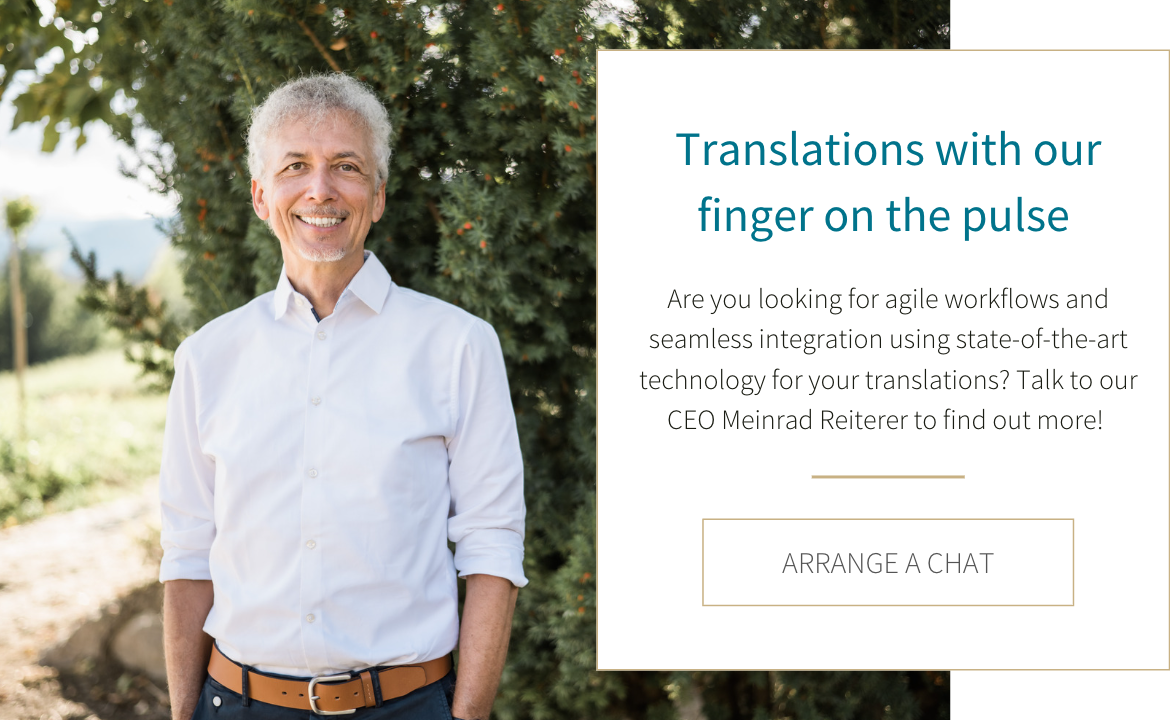
The translation and localization industry is in a constant state of evolution – in fact, it would be more accurate to call it a revolution with the emergence of neural machine translation engines, artificial intelligence and large language models in recent years. This year’s TAUS Conference took place in early October in Salt Lake City, and one of the main topics of discussion was the impact of AI and what to expect from it in future. MEINRAD’s CEO Meinrad Reiterer was there, and we asked him about his impressions of the event and his assessment of AI.
What is TAUS?
TAUS was founded in 2005 as a think tank with a mission to automate and innovate translation, as back then the signs were that machine translation could be a useful tool for the translation industry. Now, TAUS is a central network for the localization and language industry and holds exciting conferences every year – this year in Salt Lake City. This year’s conference took place amid a backdrop of great change: we think 2023 will be remembered as a year of transformation, one that will lay the foundations for a wide range of changes to business models and in how multilingual content is produced.
What was in store for people at the conference?
The conference is specifically aimed at people in the language industry, and the focus was on the expected impacts of generative artificial intelligence. There were various talks – given by Google, Meta AI, Amazon, Microsoft, Dell and others – addressing key questions such as: How can we in the industry react to the revolution that’s taking place right now? To what extent is AI useful for translations? What impact does this have on the technology and tools we use at the moment, and on our staff? How will business/pricing models and services change?
Everyone has heard of ChatGPT by now. It has given almost all businesses, not just those in the language industry, food for thought. Pretty much every player in our industry is considering how and where it makes sense to use large language models.
What are large language models?
Large language models, LLMs for short, are large, generative language models which can be trained using artificial intelligence and huge amounts of text data. LLMs are suitable for various applications, and they form the basis for AI chatbots like ChatGPT, but of course it may be possible to use them in many other situations.
So does ChatGPT produce better translations than a machine translation engine?
The general consensus is that trained neural MT engines, which currently represent the state of the art, still produce much better translations. But LLMs are opening up lots of new possibilities in relation to the translation process itself.
Are there specific examples of these possibilities?
Yes! One potential application of LLMs is checking the quality of translations (primarily machine translations, but also human translations in future). The underlying idea is that LLMs can use specific criteria to evaluate whether a (machine) translated sentence is high-quality or whether it needs to be post-edited. As a result, only the sentences in a text which fail to meet a pre-defined standard would need to be post-edited, which could save clients large amounts of money and considerably reduce the time taken to deliver translation projects.
Another example of where LLMs might be useful is in automating almost the entire post-editing process. Texts translated by MT engines could be sent to LLMs and reviewed using a defined prompt to check that the translations meet particular criteria, such as style, formality and compliance with specified terminology.
Something else worth mentioning is that LLMs are now being used to create content as well. For example, the latest release of the cloud-based “Central” version of MadCap Flare features a direct ChatGPT interface, which allows authors to generate text suggestions or use ChatGPT to cut down or modify the style of a text they’ve written themselves.
It sounds like LLMs might (already) by good translators. What are the biggest differences between conventional machine translation engines and large language models?
Neural engines were specifically developed and trained for translations, while large language models weren’t originally intended for translation per se – it has just proved to be one of their many potential applications. The vast majority of the training material is based on English texts. That means translations in and from English usually work well, but the quality rapidly drops off with other languages, especially less common ones.
What are your takeaways from the TAUS Conference?
The language industry has engaged with AI for many years, and constantly adapting to new technologies and new challenges is something we’re used to, so we can easily manage these innovations. I think there could be major disruption in other sectors, such as text creation as I’ve already talked about, or software programming. No one can say right now which way it will all go. Only one thing is certain: change will happen quickly. It seems that the initial hype around ChatGPT and LLMs has died down a bit and has given way to more realistic expectations – and I’m not the only person who sees it that way.
What would be a useful way to use LLMs in the translation process?
Our partner memoQ is working on a plugin for machine translations based on LLMs. The special feature is that low fuzzy matches – previous translations which are 50-74% similar to the current text – from translation memories are incorporated into the prompts, along with other resources such as existing term bases. So these low fuzzy matches become much better and more useful. Together with memoQ we’re testing this technology right now, and there have already been some promising results.
Do you think AI will make human translators and translation agencies redundant?
The translation industry has always been confronted with game-changing innovations. I remember very clearly when translation memories first emerged, and many translators thought they’d soon be out of a job. The same thing happened a few years ago when machine translation started to be used more widely. The fact is, without the help of this technology, we wouldn’t be able to translate the steadily increasing range of texts we get. I’m very confident that there will always be a need for language and translation services. But what definitely will change is how these translations are produced and how translators work in future.
How will these things change?
Translators will have to develop new skill sets. They’ll need the ability to use the existing software tools and a very good understanding of the available technology. If they don’t embrace it and refuse to accept how things are changing, sooner or later they’ll get left behind.
What’s your advice for clients who want to use LLMs?
My advice is to have realistic expectations of what ChatGPT and other LLMs can do, and to question the claims and promises made about it – in particular relating to translations.Talk to your trusted translation agency: they’ll have experts who work with LLMs every day and can explain what might be possible and beneficial in your specific situation.
Finally, how else do you think we will need to adapt in light of AI?
Things are changing very quickly, and the quantum leaps are coming more and more frequently. I think we’ll see huge progress in the field of artificial intelligence in the years to come. It’s extremely difficult to make specific predictions, but there’s no doubt in my mind that we’ll have to be prepared for major technological innovations and disruption.
Main image © MEINRAD


